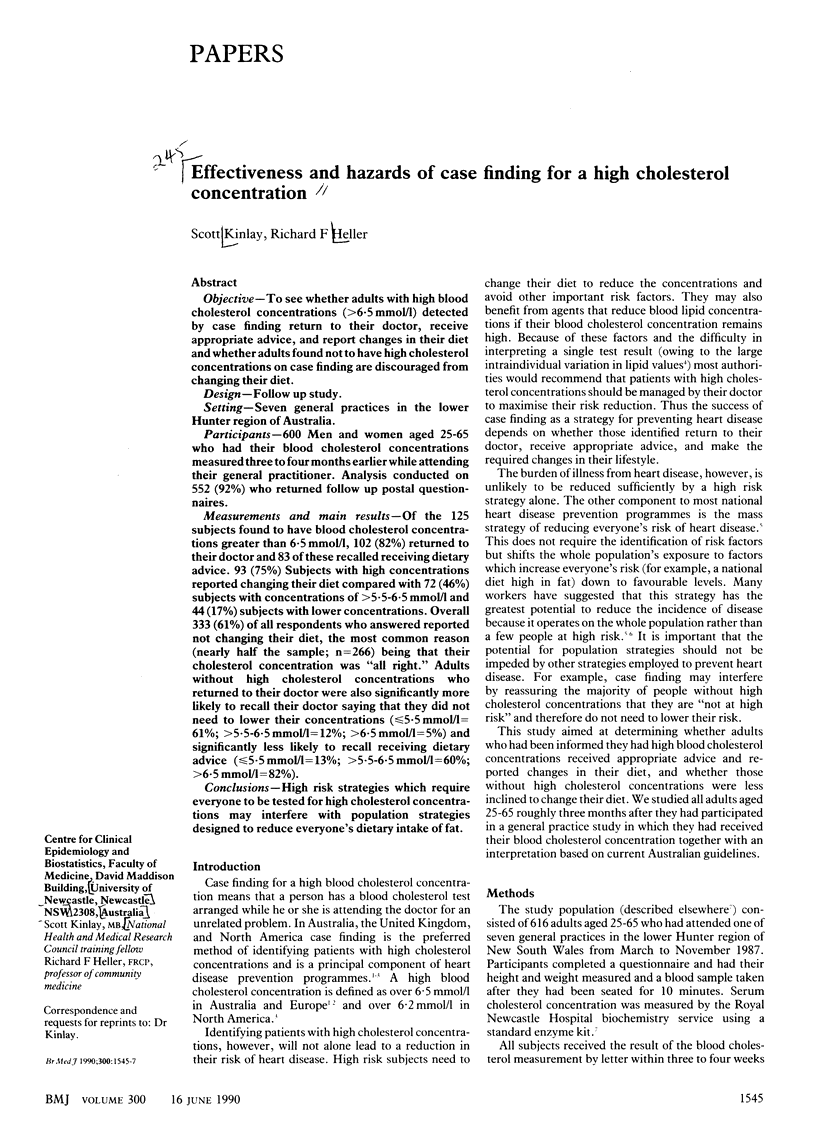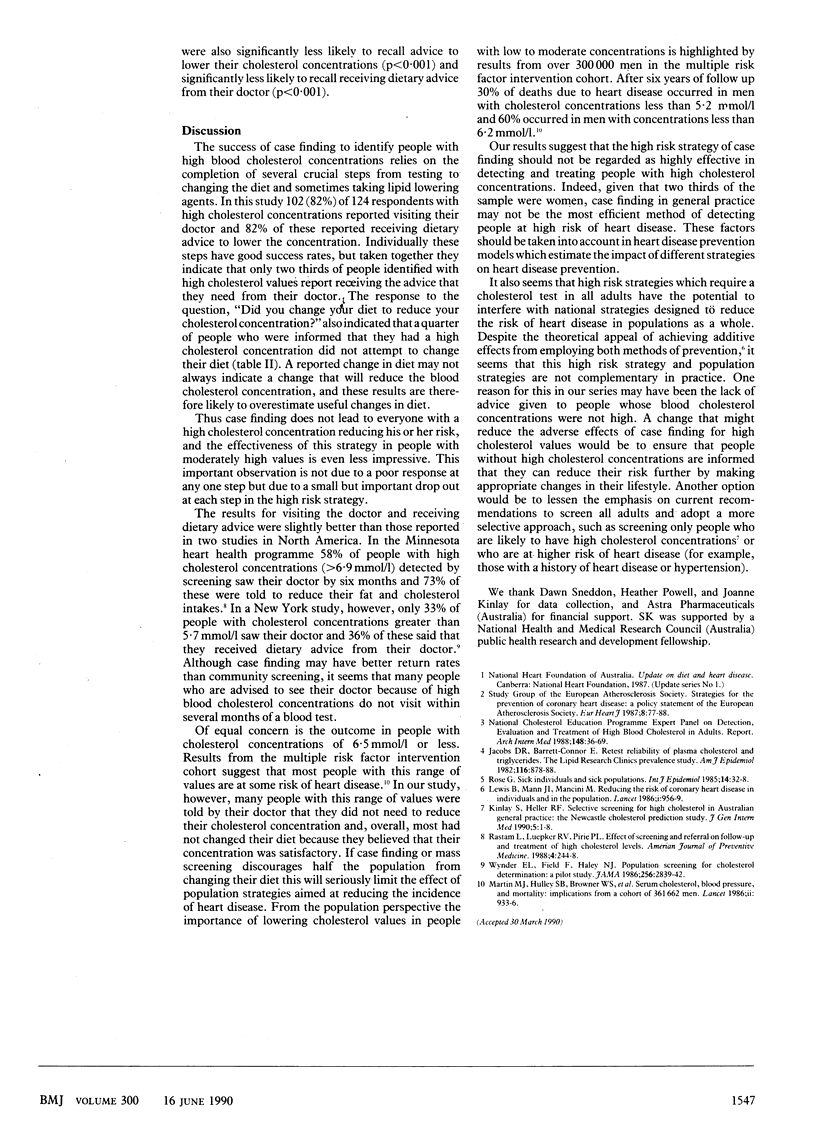Abstract
OBJECTIVE--To see whether adults with high blood cholesterol concentrations (greater than 6.5 mmol/l) detected by case finding return to their doctor, receive appropriate advice, and report changes in their diet and whether adults found not to have high cholesterol concentrations on case finding are discouraged from changing their diet. DESIGN--Follow up study. SETTING--Seven general practices in the lower Hunter region of Australia. PARTICIPANTS--600 Men and women aged 25-65 who had their blood cholesterol concentrations measured three to four months earlier while attending their general practitioner. Analysis conducted on 552 (92%) who returned follow up postal questionnaires. MEASUREMENTS AND MAIN RESULTS--Of the 125 subjects found to have blood cholesterol concentrations greater than 6.5 mmol/l, 102 (82%) returned to their doctor and 83 of these recalled receiving dietary advice. 93 (75%) Subjects with high concentrations reported changing their diet compared with 72 (46%) subjects with concentrations of greater than 5.5-6.5 mmol/l and 44 (17%) subjects with lower concentrations. Overall 333 (61%) of all respondents who answered reported not changing their diet, the most common reason (nearly half the sample; n = 266) being that their cholesterol concentration was "all right." Adults without high cholesterol concentrations who returned to their doctor were also significantly more likely to recall their doctor saying that they did not need to lower their concentrations (less than or equal to 5.5 mmol/l = 61%; greater than 5.5-6.5 mmol/l = 12%; greater than 6.5 mmol/l = 5%) and significantly less likely to recall receiving dietary advice (less than or equal to 5.5 mmol/l = 13%; greater than 5.5-6.5 mmol/l = 60%; greater than 6.5 mmol/l = 82%). CONCLUSIONS--High risk strategies which require everyone to be tested for high cholesterol concentrations may interfere with population strategies designed to reduce everyone's dietary intake of fat.
Full text
PDF


Selected References
These references are in PubMed. This may not be the complete list of references from this article.
- Jacobs D. R., Jr, Barrett-Connor E. Retest reliability of plasma cholesterol and triglyceride. The Lipid Research Clinics Prevalence Study. Am J Epidemiol. 1982 Dec;116(6):878–885. doi: 10.1093/oxfordjournals.aje.a113490. [DOI] [PubMed] [Google Scholar]
- Kinlay S., Heller R. F. Selective screening for high cholesterol in Australian general practice: the Newcastle Cholesterol Prediction Study. J Gen Intern Med. 1990 Jan-Feb;5(1):1–8. doi: 10.1007/BF02602300. [DOI] [PubMed] [Google Scholar]
- Lewis B., Mann J. I., Mancini M. Reducing the risks of coronary heart disease in individuals and in the population. Lancet. 1986 Apr 26;1(8487):956–959. doi: 10.1016/s0140-6736(86)91054-8. [DOI] [PubMed] [Google Scholar]
- Martin M. J., Hulley S. B., Browner W. S., Kuller L. H., Wentworth D. Serum cholesterol, blood pressure, and mortality: implications from a cohort of 361,662 men. Lancet. 1986 Oct 25;2(8513):933–936. doi: 10.1016/s0140-6736(86)90597-0. [DOI] [PubMed] [Google Scholar]
- Rose G. Sick individuals and sick populations. Int J Epidemiol. 1985 Mar;14(1):32–38. doi: 10.1093/ije/14.1.32. [DOI] [PubMed] [Google Scholar]
- Råstam L., Luepker R. V., Pirie P. L. Effect of screening and referral on follow-up and treatment of high blood cholesterol levels. Am J Prev Med. 1988 Sep-Oct;4(5):244–248. [PubMed] [Google Scholar]
- Wynder E. L., Field F., Haley N. J. Population screening for cholesterol determination. A pilot study. JAMA. 1986 Nov 28;256(20):2839–2842. [PubMed] [Google Scholar]


